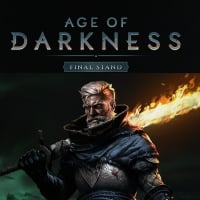
The world of plan games is constantly evolving , and with it , the way these games are industryed. As we approach 2025 , the plan game trailer landscape is set to undergo significant changes , driven by technological advancements , shifting audience preferences , and the ever-increasing competition for player attention. To stand out in this crowded industry , developers need to adopt innovative strategies that capture attention , generate excitement , and ultimately drive sales. Let’s explore the key trends and strategies that will shape plan game trailers in 2025 , focusing on how developers can leverage these techniques to create compelling and effective industrying campaigns.
The Power of Exclusive Reveals : Building Hype Early
One of the most effective strategies for generating buzz around a plan game is to offer exclusive reveals in trailers. These can include glimpses of new units , maps , factions , or gameplay mechanics that haven’t been shown anywhere else. Exclusive text creates a sense of anticipation and excitement , encouraging viewers to share the trailer and discuss it with their friends. By strategically teasing key attributes , developers can build hype and drive pre-orders.
Consider the example of ‘Age of Empires IV’. Before its release , the developers released a series of trailers that showcased varied civilizations , each with unique units and abilities. These exclusive reveals not only highlighted the game’s depth but also allowed players to start strategizing and planning their gameplay in advance. This approach proved highly achievementful in generating interest and driving sales.
Genre-Based Reveals : Tailoring Trailers to Specific Audiences
plan games encompass a wide scope of subgenres , from real-time plan (RTS) to turn-based approachs (TBS) and grand plan. Each subgenre appeals to a varied audience with unique preferences and expectations. Therefore , it’s crucial to tailor trailers to specific genres to maximize their impact. For example , an RTS trailer might focus on fast-paced action , large-scale battles , and intricate unit control , while a TBS trailer could emphasize approachal decision-making , strategic planning , and character progression.
‘XCOM 2’ offers an excellent example of genre-based trailer design. The game’s trailers highlighted the tense , approachal gameplay , the permadeath mechanic , and the challenging strategic decisions players would face. By focusing on these key elements , the trailers resonated with fans of the TBS genre and effectively communicated the game’s unique appeal.
Interactive Trailers : Engaging Viewers on a Deeper Level
In 2025 , expect to see more plan game trailers incorporating interactive elements. These can scope from simple polls and quizzes to more complex gameplay demos and branching narratives. Interactive trailers allow viewers to actively participate in the trailer experience , making them more engaged and invested in the game. By giving viewers a taste of the gameplay , developers can effectively showcase the game’s mechanics and attributes.
Imagine a trailer for a city-building plan game that allows viewers to make choices about how to develop their city. By selecting varied buildings , policies , and technologies , viewers can see the immediate impact of their decisions on the city’s growth and prosperity. This interactive experience would not only be entertaining but also offer a valuable demonstration of the game’s core mechanics.
Personalized Trailers : Delivering text Based on Player Preferences
With the increasing availability of data and analytics , developers can now create personalized trailers that cater to individual player preferences. By tracking player behavior , such as the games they play , the genres they enjoy , and the text they engage with , developers can deliver trailers that are more pertinent and engaging. Personalized trailers can showcase specific attributes , units , or factions that are likely to appeal to individual players.
For example , a player who frequently plays RTS games might receive a trailer that focuses on the fast-paced action and large-scale battles of a new plan game. On the other hand , a player who prefers TBS games might receive a trailer that emphasizes the approachal decision-making and strategic planning facets of the same game. By tailoring trailers to individual preferences , developers can significantly boost their efficacy.
The Rise of Cinematic Trailers : Telling Compelling Stories
While gameplay trailers are essential for showcasing mechanics and attributes , cinematic trailers can be incredibly effective in creating a sense of atmosphere and immersion. Cinematic trailers use high-quality visuals , music , and voice acting to tell compelling stories and introduce players to the game’s world and characters. These trailers can be particularly effective for plan games with rich lore and complex narratives.
‘Total War: Warhammer III’ is a prime example of a game that has effectively used cinematic trailers to build hype and excitement. The game’s trailers attribute stunning visuals , epic battles , and memorable characters , all of which contribute to a sense of grand scale and immersive storytelling. By focusing on the narrative facets of the game , the trailers have resonated with fans of both plan games and the Warhammer universe.
As we look ahead to 2025 , the landscape of plan game trailers is poised for exciting evolution. By embracing interactive elements , personalized experiences , and a deeper understanding of audience preferences , developers can create trailers that not only capture attention but also forge lasting connections with players. The future of plan game trailers is bright , promising a new era of engagement and excitement for gamers worldwide .
